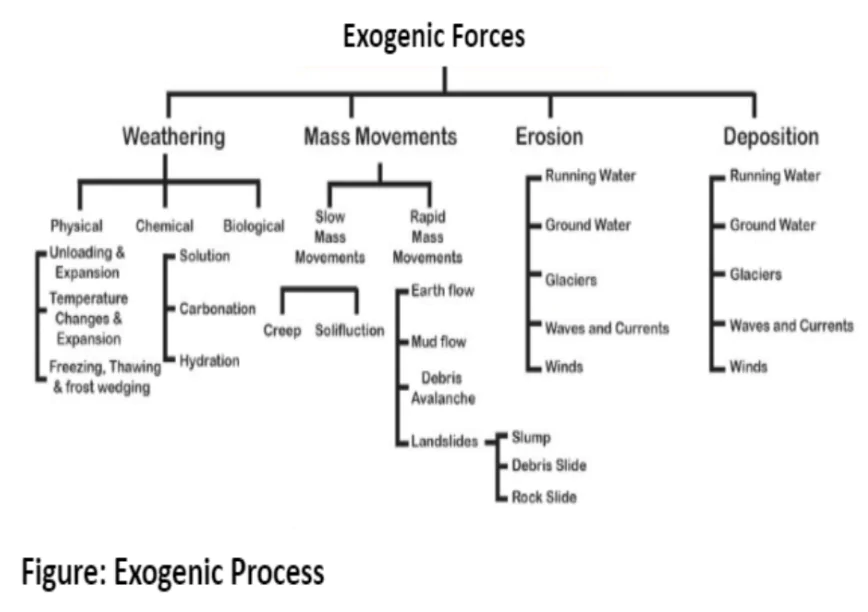![]() April 27, 2024
April 27, 2024
![]() 30
30
![]() 0
0
Exogenic forces, also known as external forces or land-wearing forces, are natural processes that shape the Earth’s surface from the outside. They work over long periods, like thousands or millions of years. These forces include things like erosion by water, wind, and ice, as well as movements of the Earth’s crust caused by things like earthquakes and volcanic eruptions. They’re the things that wear down mountains, carve out valleys, and shape the landscape we see around us.

|
| Must Read | |
| Current Affairs | Editorial Analysis |
| Upsc Notes | Upsc Blogs |
| NCERT Notes | Free Main Answer Writing |
Exogenic forces, covering weathering, erosion, and deposition processes, play a vital role in shaping Earth’s surface over long periods. Through chemical, physical, and biological actions, these forces gradually wear down and reshape landscapes, contributing to the dynamic evolution of the Earth’s topography.
<div class="new-fform">
</div>

Latest Comments